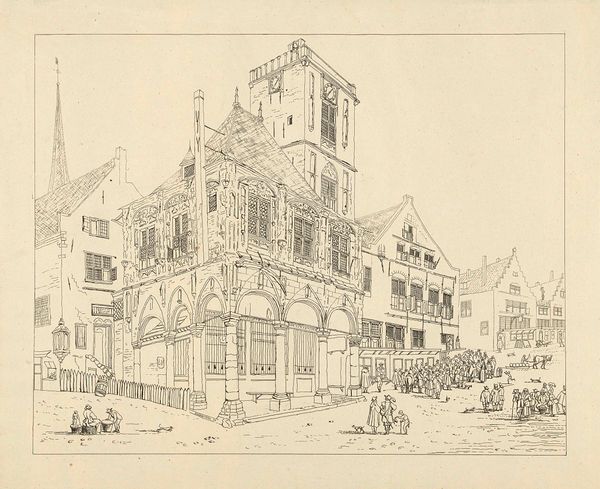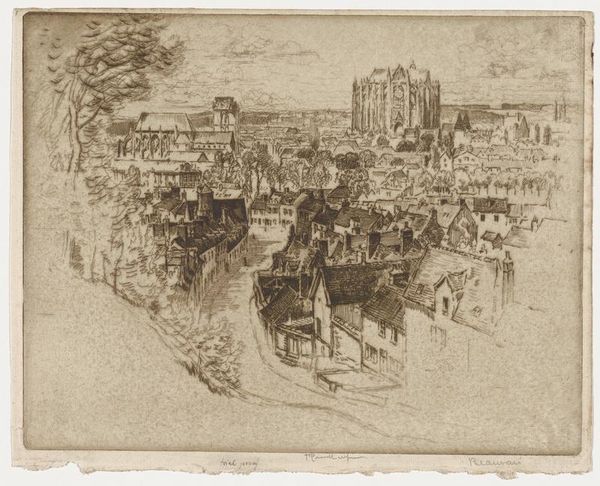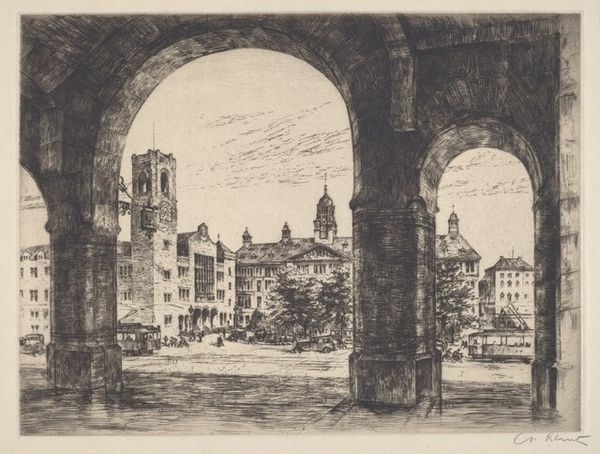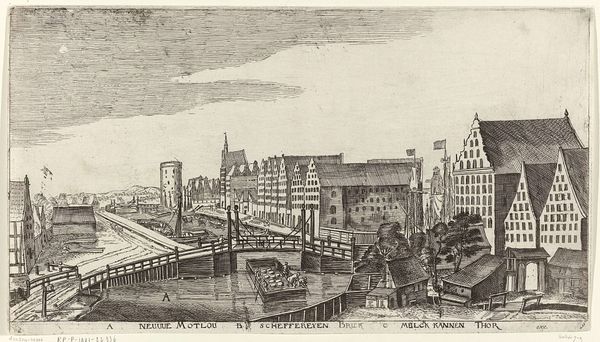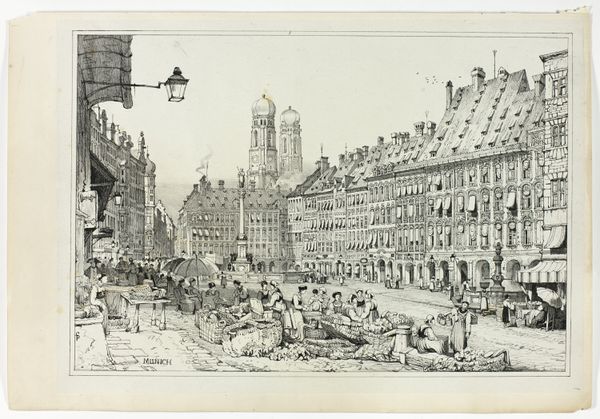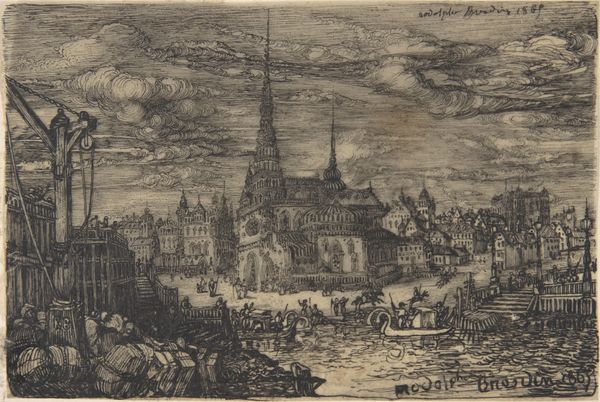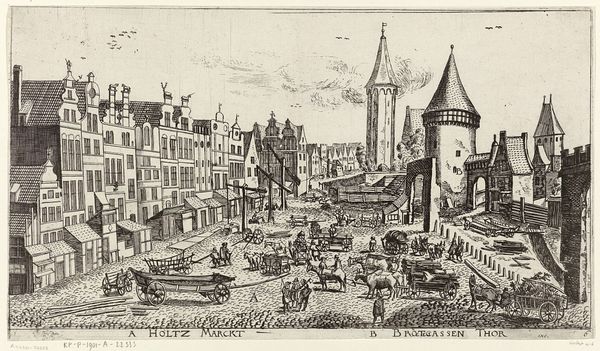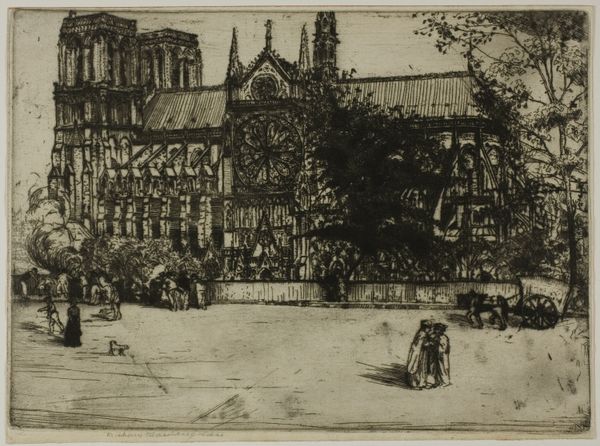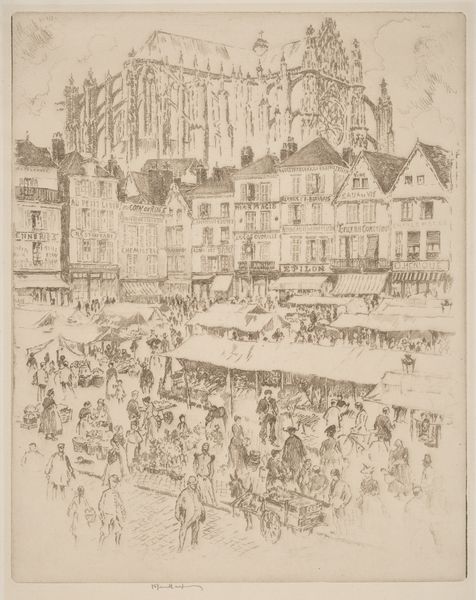
Dimensions: plate: 20 x 24.9 cm (7 7/8 x 9 13/16 in.) sheet: 29.5 x 34.2 cm (11 5/8 x 13 7/16 in.)
Copyright: National Gallery of Art: CC0 1.0
Curator: This is John Marin’s "Notre Dame, Seen from the Quai Celestins, Paris," created in 1909 using pen, ink, and printmaking techniques. Editor: Immediately, the frantic energy of the line work grabs me. It’s a beautiful controlled chaos that somehow resolves into a recognizable cityscape. There’s a real vibrancy, despite the limited tonal range. Curator: Marin was part of a group of American artists finding their voice in early 20th-century Paris. His prints and watercolors often depicted urban scenes, exploring the rapid changes and energy of modern life. His training included architecture, and that influence is evident here. Look closely at the figures in the foreground, how small they are in relationship to the impressive architecture, they seem to enjoy a simple leisurely day, fishing and walking by the river, which is juxtaposed against the backdrop of immense Notre Dame. Editor: Exactly! That contrast between the small human figures and the massive cathedral really underscores a sense of scale, a play between the intimate and the monumental. Note how the frenetic marks almost vibrate on the page, especially around Notre Dame. There is visual depth, without traditional techniques such as value. It seems like light itself is fractured into dynamic marks. Curator: Marin, though American, drew influence from Impressionism and Post-Impressionism. He was fascinated by the interplay between structure and motion. Consider the labor that went into this print; he created a tangible sense of the ephemeral through careful strokes, building his name in modernism by imbuing a deep sense of place, the city that changed as much as it endured. Editor: I’d agree; through material processes he really captures the temporal condition of early 20th century life. A feat which demonstrates a unique tension within a traditional cityscape image. It seems so modern through abstraction. Curator: I think your point of how modern it feels still resonates. By focusing on his production method and urban life in Paris, this particular print provides great insight into social and artistic change happening then. Editor: Indeed. Marin used fairly traditional techniques to explore quite contemporary conditions, capturing a fleeting moment of city life with what could also be considered as enduring structural integrity and complex visual appeal.
Comments
No comments
Be the first to comment and join the conversation on the ultimate creative platform.

